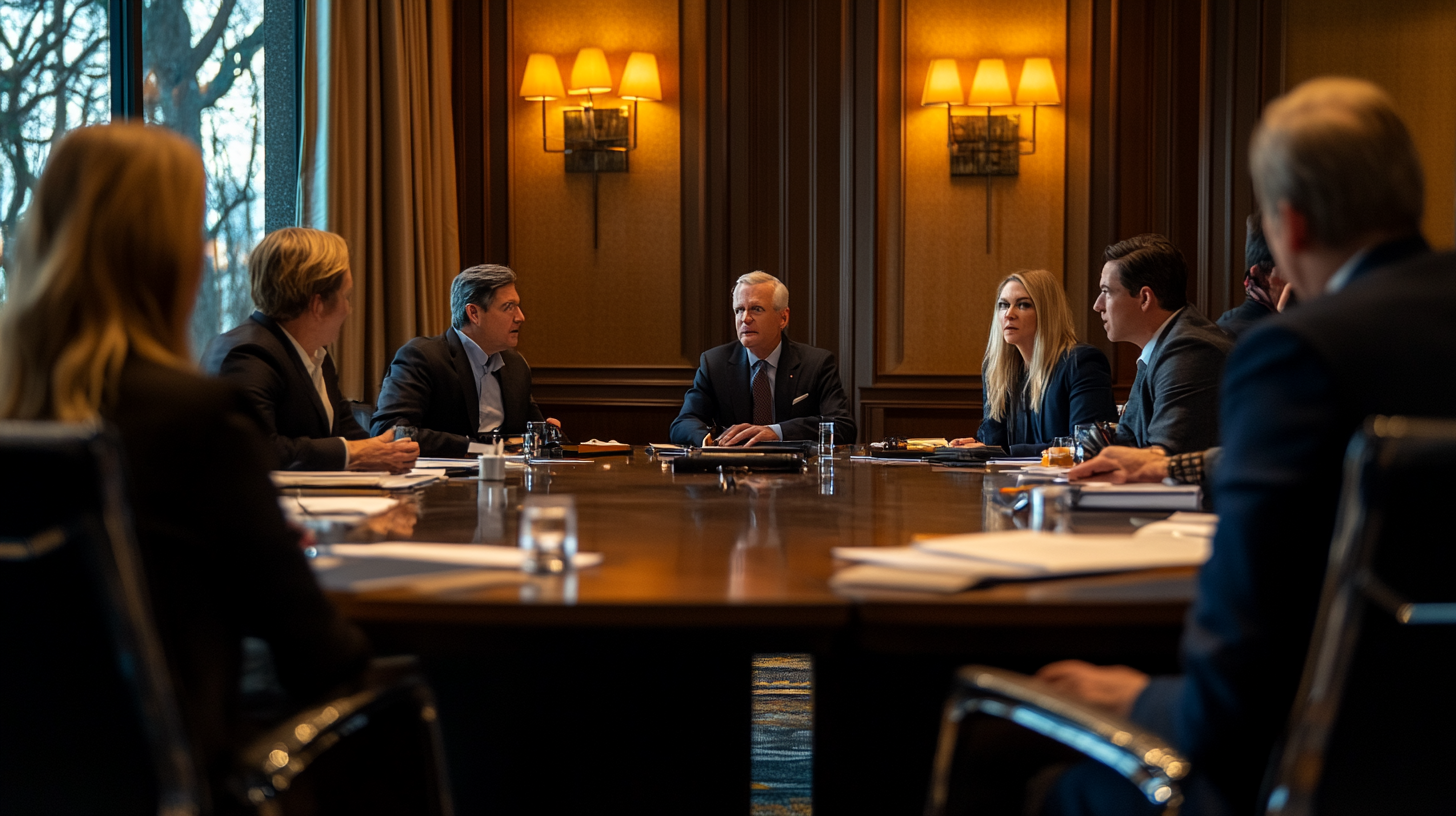7 Smart Moves for Corporate Travel Success

I’ve always been amazed by how corporate travel reflects the pulse of global business. When I first began exploring how organizations send their employees across borders, I noticed a common thread: travel is an investment that goes well beyond plane tickets and hotel reservations. It’s about strengthening partnerships, fueling innovation, and forging long-term success. In the evolving travel landscape of 2025, I see companies focusing more on technology, sustainability, and flexible solutions than ever before. With countless opportunities (along with unforeseen challenges) on the horizon, these seven moves can truly optimize corporate travel.
1. Understand the Growing Demand

Year after year, I’ve observed how business travel transforms from a secondary expense to a strategic lever for growth. According to industry data, global corporate travel spending is projected to surpass two trillion dollars by 2028, underscoring its importance in fueling commerce and connectivity. Even in light of changing regulations or market fluctuations, there’s no doubt that organizations are setting aside hefty budgets for face-to-face meetings and international expansion.
In my own travels, I’ve encountered employees who felt like they were simply checking a box when they flew out for a sales pitch. That mindset is gradually shifting. A recent Global Business Travel Association study suggests that by 2025, most businesses are aiming to realign travel agendas with broader corporate goals. For travel managers, understanding this surge in demand means anticipating the desire for both high-value meeting opportunities and streamlined logistics. By tapping into data analytics and forecasting tools, we can get a head start on capacity planning for conferences, summits, and on-site client visits.
Ultimately, listening to employees helps shape a clearer picture of trip priorities. It’s often the frequent flyers who give the best feedback, sharing what works and what needs fine-tuning. With this insight, corporate travel policies and budgets can be adapted well in advance to match the rising number of trips, as well as travelers’ comfort and productivity needs.
2. Establish Clear Travel Policies

Travel policies set the foundation for safe, cost-effective, and hassle-free journeys. I’ve come to rely on a set of guiding principles sometimes known as the “4 C’s”—Cost, Compliance, Convenience, and Care. Clear guidelines outline which flights and hotels are approved, detail reimbursement protocols, and highlight any exceptions or special approvals needed. This clarity simplifies booking, reduces confusion, and keeps everything transparent.
In practice, I’ve noticed how inconsistent rules can create unnecessary stress. Employees who are unsure of what’s allowed tend to either overspend or waste hours seeking clarification. Adopting a robust policy eliminates guesswork. According to Deloitte‘s 2023 study, travel managers who revisit and refine guidelines quarterly often see better policy adherence, leading to lower overall travel spend. And it’s not just about dollars. When teams understand the “why” behind these rules—like aligning with the duty-of-care obligations—they’re more willing to follow them.
Another undervalued aspect is continuous communication. Some companies hold short monthly sessions to inform employees about updates in the travel policy. Others integrate automated notifications into their booking tools, reminding travelers of recommended airlines or hotels. These proactive measures promote compliance and build a sense of partnership between travel managers and employees.
3. Book Early and Manage Budgets

I can personally attest to the wonders of early booking. Securing flights and hotels at least 60 days in advance not only locks in lower fares but also opens a wider range of seat selections and room types. My teammates often thank me when an early booking spares them from dealing with fully booked hotels during peak seasons. In 2025, with many people resuming or increasing travel, last-minute availability can be unpredictable—and significantly pricier.
Beyond booking early, strong budgeting methods can keep costs from spiraling out of control. Industry data reveals that businesses leveraging expenditure forecasting tools—like advanced expense management software—tend to experience up to 20% lower travel-related overspending. In my experience, a system that categorizes flights, accommodations, meals, and incidentals creates a clear view of where funds are going. It also helps in negotiating better deals with preferred vendors, especially if you can show them consistent volume.
Another trick I’ve learned is bundling related expenses. Some travel-centric credit card rewards programs let you earn additional savings if you consolidate hotel and flight purchases together. These strategies might seem small in isolation, but they add up to significant savings over time, ensuring travel budgets remain flexible and sustainable.
4. Harness Modern Tech Tools

I’m fascinated by how rapidly technology has transformed the corporate travel experience. Booking tools powered by Global Distribution Systems (GDS) can fetch the most competitive fares in seconds, while traveler-centric software carefully logs itineraries and keeps expense tracking in one place. With apps like Paxes or TPE, I’ve seen managers quickly identify non-compliant bookings, enabling real-time policy enforcement. This not only curtails unnecessary spending, but also minimizes confusion for travelers.
Connectivity on the move is another major game-changer. I usually recommend eSIM providers like Airalo for travelers who need to stay constantly connected at reasonable rates. In today’s near-future reality, having stable internet isn’t just a luxury—it’s a requirement for closing deals, hosting virtual meetings, and handling last-minute travel changes. On longer trips, or for individuals blending business with leisure, extended-stay solutions such as AltoVerse apartments offer flexibility and comfort. I’ve personally seen colleagues thrive when they have a well-equipped living space for longer assignments.
Of course, keeping up with new tools can be overwhelming. The key is focusing on solutions that genuinely enhance productivity and traveler well-being. In many cases, a simple user interface, direct integration with your expense platform, and reliable support do more for employee satisfaction than countless unnecessary features.
5. Negotiate Vendor Partnerships

When I first started looking into airline partnerships, I realized how valuable negotiated deals can be. Volume-based contracts often come with discounted fares, loyalty points, and perks like priority check-in or lounge access. In volatile travel markets, these relationships can also offer flexibility if plans change at the last minute.
I’ve found that periodically reviewing these contracts ensures they align with evolving market rates and personnel needs. If you notice that your team travels more frequently on certain routes—say between New York and London—it might be time to renegotiate for a better rate or upgraded baggage allowances. Studying booking histories and analyzing data from your expense management system allows you to back up these negotiations with concrete figures.
Similarly, partnering with hotels or car rental services can yield extra benefits like free Wi-Fi, upgraded rooms, or corporate shuttle options. It’s worth exploring local partnerships, too, especially in regions where multinational hotel chains are scarce. By securing unique, cost-effective arrangements, companies can offer employees a comfortable stay without overspending.
6. Prioritize Traveler Safety

Wherever I go, I’ve learned to prioritize personal well-being as my guide. Duty of care is pivotal in corporate settings, especially when employees venture into unfamiliar territories or regions with evolving security concerns. Real-time alerts, whether through specialized apps or email notifications, keep travelers informed about weather events, political instability, or health advisories. Being armed with this knowledge fosters a sense of security and allows for proactive decision-making.
In my travels, I’ve seen some companies take simple but impactful steps such as 24/7 emergency help lines. Travelers can quickly reach a live agent for support—whether that’s rebooking a canceled flight or coordinating ground transportation. Comprehensive insurance coverage is another must. Even though it’s easy to overlook, adequate insurance can make a world of difference if someone falls ill or encounters an accident abroad.
Perhaps the biggest lesson I’ve picked up is that robust safety protocols aren’t just about reaction—they’re about prevention. Regular risk assessments, ongoing training for employees heading to high-risk zones, and updated crisis-response plans weave together to build a culture of care. Everyone deserves to feel protected when traveling for work, and these measures go a long way in establishing trust within an organization.
7. Embrace Sustainability and Bleisure

Sustainability is more than a buzzword. Every time I board a flight, I’m reminded of the environmental impact of travel, and I see more companies willingly taking steps to reduce their carbon footprint. Some organizations offset emissions by supporting reforestation or clean energy programs, while others actively encourage the use of trains for certain routes. A recent study suggests that employees increasingly prefer to work for companies that demonstrate a tangible commitment to eco-friendly business travel.
Bleisure—merging business with leisure—continues to gain popularity. I’ve personally enjoyed adding a weekend to certain trips, which allows me to visit local cultural sites while still being fresh for Monday’s meetings. It’s a perk that many employees find rejuvenating. Offering flexible itineraries, wellness programs, and thoughtful breaks can boost productivity and morale in the long run. Better yet, it introduces people to new perspectives and fosters personal growth, which can indirectly benefit the company.
As organizations strive to attract and retain top talent, a well-developed sustainability and bleisure strategy can serve as a competitive advantage. By striking a balance between cost savings, traveler well-being, and a reduced carbon footprint, businesses demonstrate they value both the planet and the people driving progress.
Final Thoughts

Throughout my observations, it’s become clear that a successful corporate travel program depends on foresight, flexibility, and focused execution. Early planning and effective budgeting prevent unnecessary surprises when itineraries change or when market conditions fluctuate. Harnessing modern tech tools, especially those that integrate with your compliance and budgeting systems, ensures that employees enjoy a seamless experience—allowing them to concentrate on the real purpose of their trip.
At the same time, nurturing relationships with vendors and prioritizing traveler safety remain non-negotiable. These actions build a robust framework that supports each journey—whether it’s across the country or halfway around the world. As we find ourselves in an environment that increasingly values both human connection and digital efficiency, corporate travel must continue to adapt, embracing sustainability, well-being, and strategic thinking at every turn.
Amelia Yeaher’s Take
When I consider the future, I see corporate travel evolving into a more holistic experience, blending immersive technology with tangible, face-to-face interaction. In my view, how we travel is just as important as why we travel—and striking that balance can yield both business results and personal enrichment.
Ultimately, a successful approach to corporate travel isn’t about cutting corners; it’s about smart allocation of resources, creative thinking, and adopting solutions that truly serve employees. That’s the key to making every journey count.






